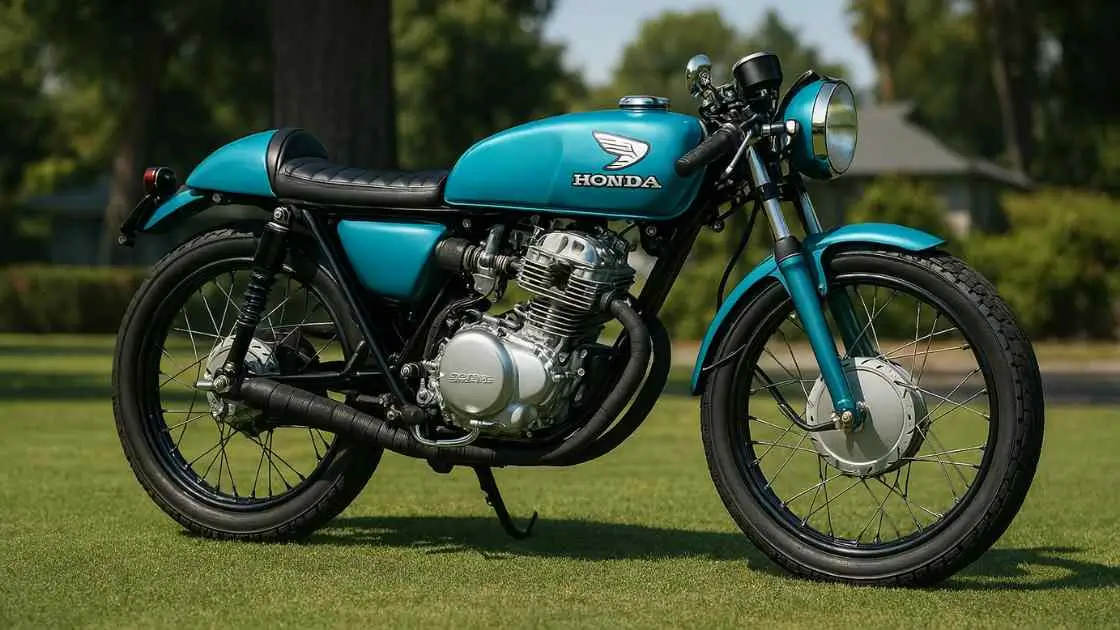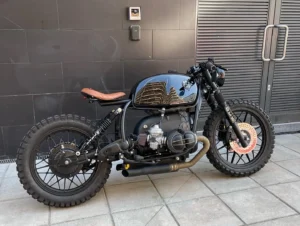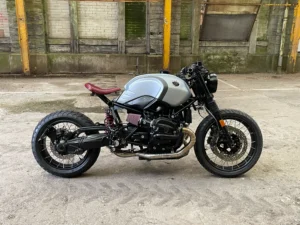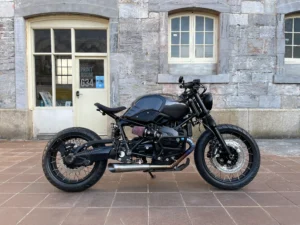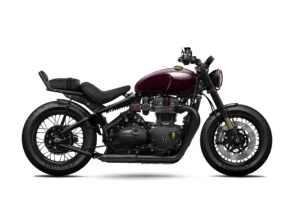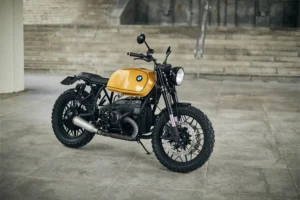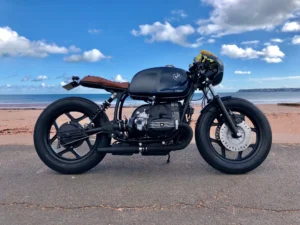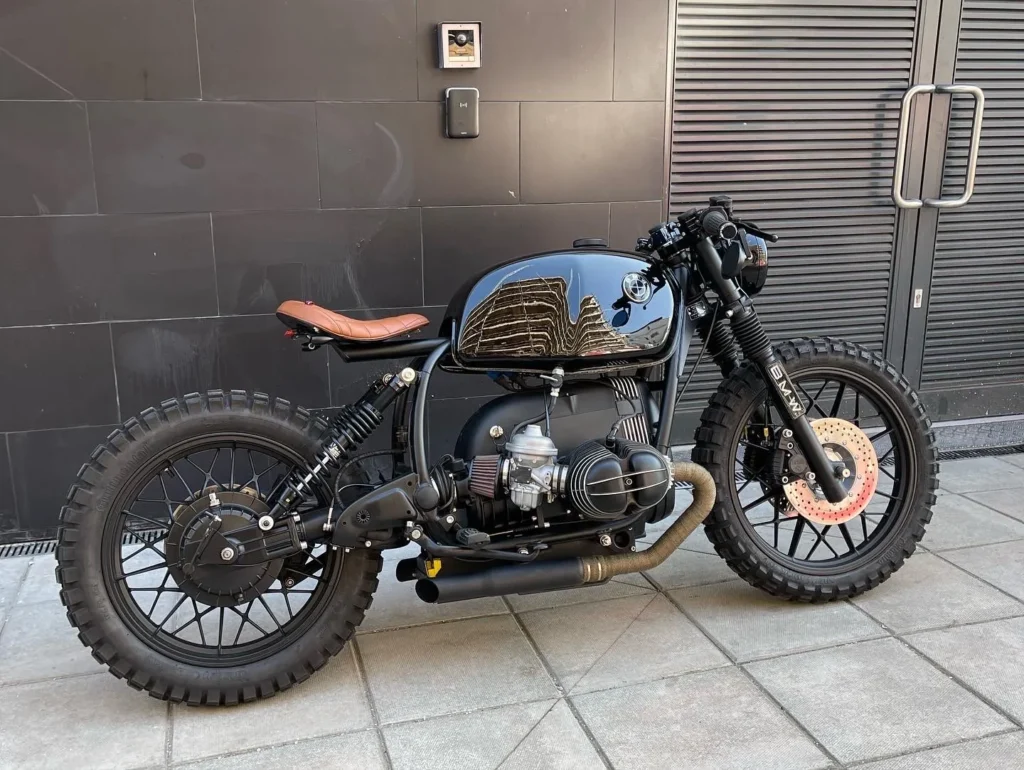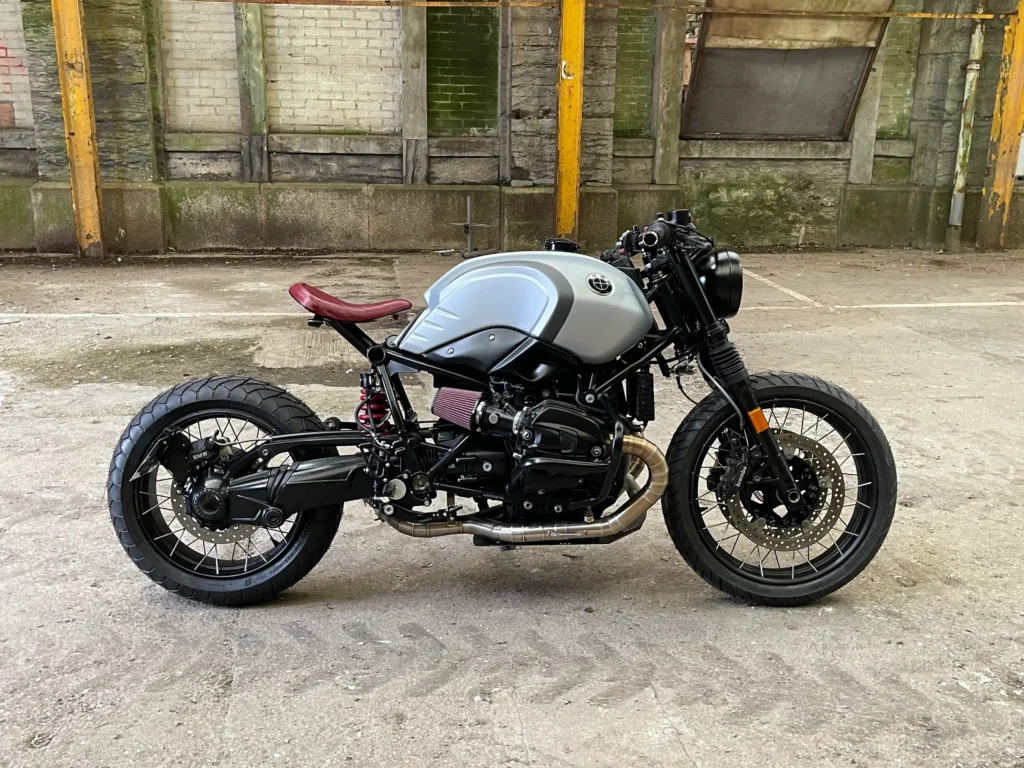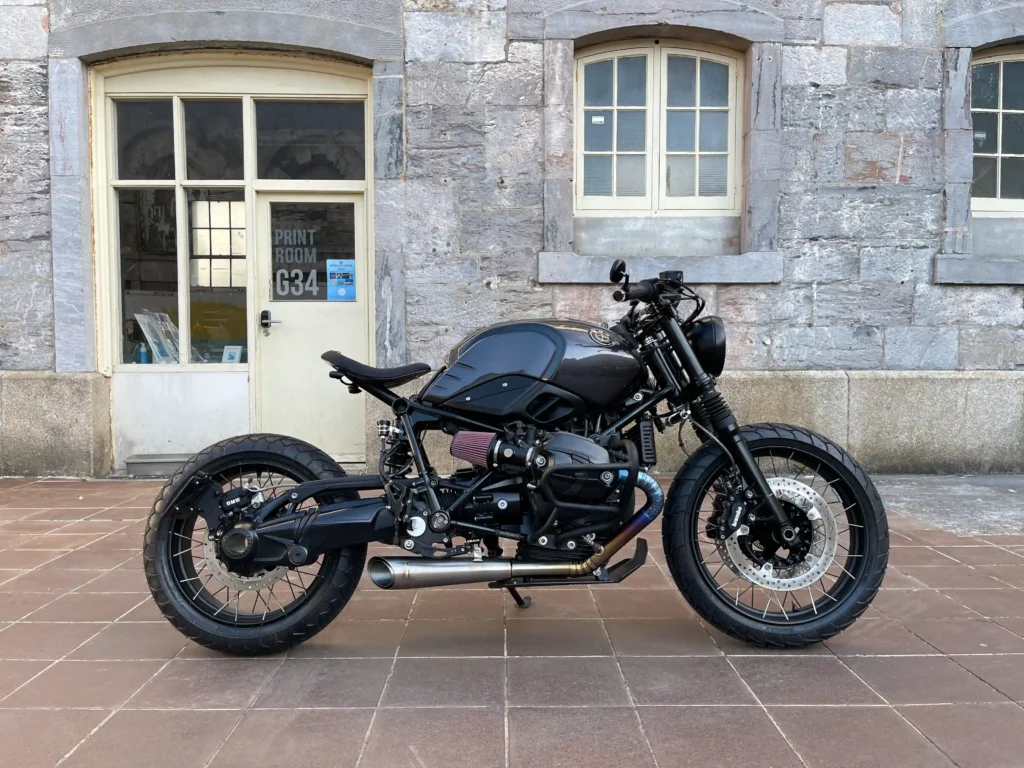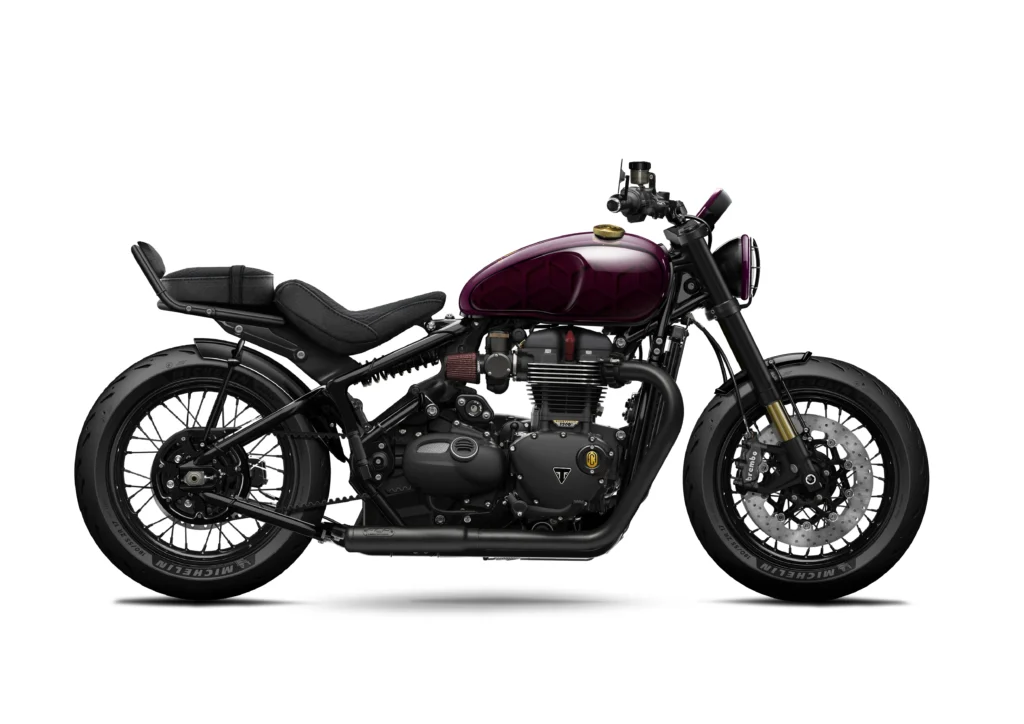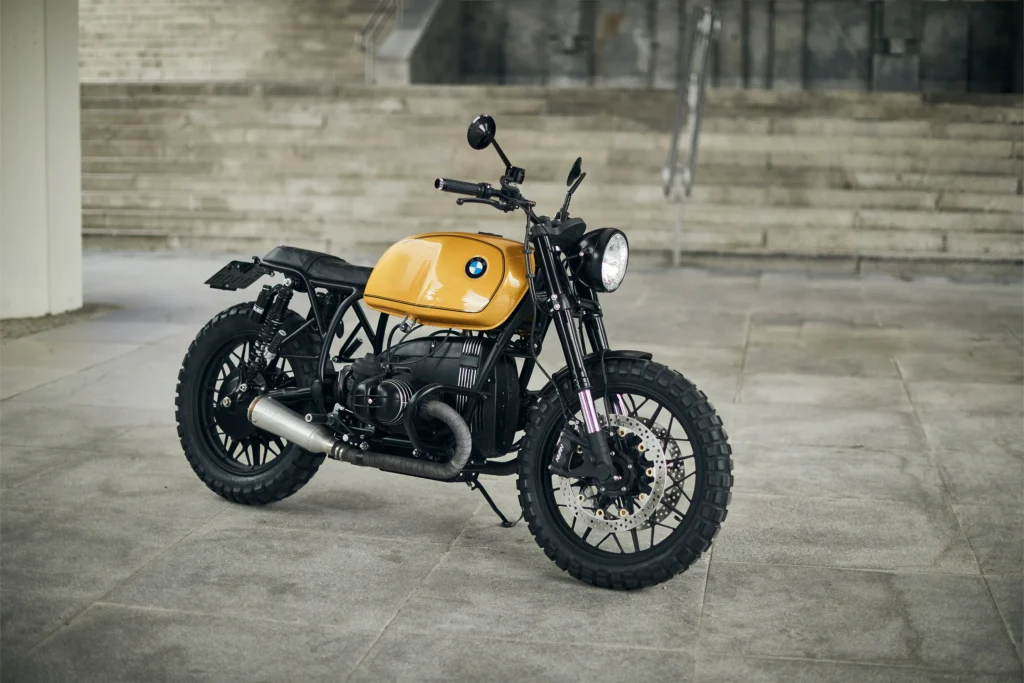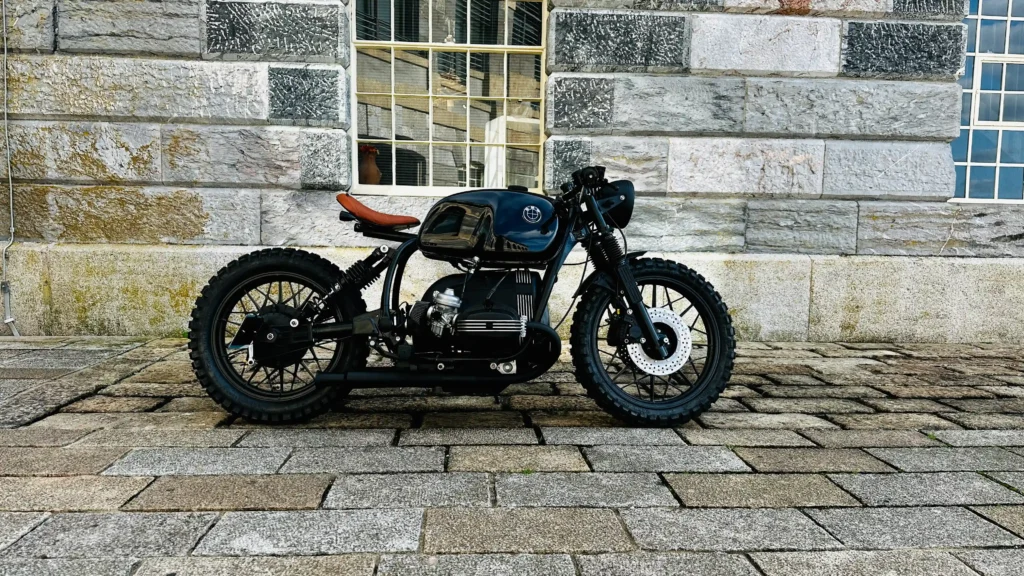Table of Contents
ToggleThe Honda CB125 is one of the most popular motorcycles for beginner riders. But it’s more than just a starter bike. With the right changes, it becomes a classic café racer—light, stylish, and full of personality. This guide covers everything you need to know. From choosing a model to modifying it step by step. You’ll learn what tools to use, which parts to buy, and how to make your CB125 look and feel like a true café racer. This isn’t just about style. It’s about building a bike that’s safe, road-legal, and fun to ride. Let’s begin.
What is a Café Racer?
A café racer is a type of custom motorcycle. It first appeared in the 1960s in the United Kingdom. Young riders changed their bikes to go faster and look different. They wanted their motorcycles to look like racing bikes. But they could not buy real race bikes. So they made changes on their own.
The main goal was speed and style. Riders removed heavy parts. They added narrow seats and small fuel tanks. They lowered the handlebars and moved the foot controls back. This made the riding position more like a racing bike.
The look became easy to spot. Thin tires. A clean frame. A long seat with a bump at the back. A low headlight. All these parts helped riders go fast for short trips. From café to café. That’s why people called them café racers.
Today, café racers are popular again. Not just for speed. But also for their simple and classic design. Many people now build their own café racers at home. Even with small bikes like the Honda CB125.
Why the Honda CB125 is the Best Base for a Café Racer Build
The Honda CB125 is a small motorcycle. But it is strong, reliable, and easy to control. Many people choose it for their first bike. It is also a smart choice for building a café racer. It is light in weight, simple in design, and low in cost. This makes it a perfect base for custom work.
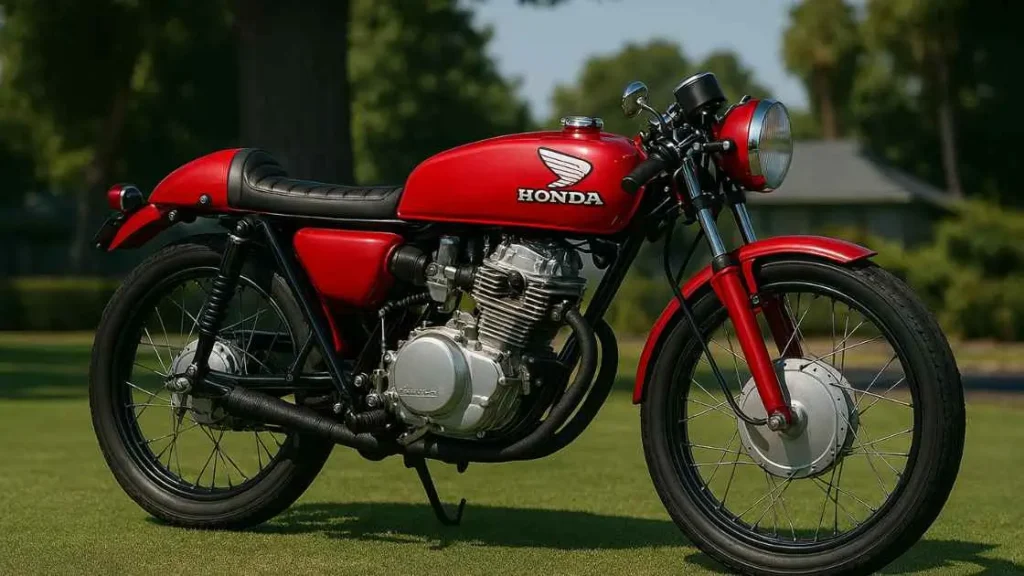
The CB125 has been made for many years. Some versions are very old, others are more modern. But all models share one thing—they are easy to ride and easy to fix. This is important when building your own café racer. You can find spare parts in many places. You can also get help from many online groups and video guides.
Some key reasons to choose the CB125:
- It is small and light, easy to move and park.
- It has a simple engine that is easy to work on.
- It is cheap to buy, even in good condition.
- It uses little fuel and is good for city rides.
- It has a long history, with many versions to choose from.
Common Honda CB125 models for café racer builds:
- CB125S – Classic style, made in the 1970s and 1980s.
- CB125T – Twin-cylinder model with a smooth engine.
- CB125E – Basic commuter model, still popular today.
- CB125R – Modern version with sporty design and fuel injection.
Basic specifications (may vary by model):
- Engine: 124cc, 4-stroke
- Power: Around 10–13 horsepower
- Top speed: 90–110 km/h (55–68 mph)
- Weight: 110–130 kg
- Fuel tank: 10–13 liters
- Brakes: Drum or disc (depends on year)
- Transmission: 5-speed manual
The CB125 is not very fast. But it is enough for daily use and short rides. For a café racer project, it gives you the right balance of performance and style. It is a good place to start, especially if you are new to custom builds.
Buying a Honda CB125 for Your Build
Before starting your café racer project, you need a good base motorcycle. Finding the right Honda CB125 is an important step. A poor choice can waste time and money. A good one makes the process smoother and faster.
Where to Look
You can find used Honda CB125 bikes in many places:
- Online marketplaces (eBay, Craigslist, Facebook Marketplace)
- Local motorcycle dealers or used bike shops
- Motorcycle auctions (online and offline)
- Community boards or motorbike clubs
Each source has pros and cons. Online ads give more options. Local sellers let you see the bike in person. Choose what works best for your location and budget.
What to Check Before You Buy
Look carefully at the bike before paying. Even if it’s cheap, a badly damaged bike can be hard to fix.
Check the following:
- Frame: Look for cracks, rust, or bends. A damaged frame is unsafe.
- Engine: Does it start? Does it make strange sounds? A working engine saves repair costs.
- Wiring: Loose or messy wires can cause electrical problems.
- Brakes and tires: Old brakes and worn tires need replacement.
- Fuel tank: Check inside for rust or dirt. Replacing a tank adds cost.
- Paperwork: Make sure the bike has legal documents (registration, title, VIN number).
Year and Model Considerations
Older CB125 models are good for classic café racer looks. Newer ones are more reliable but harder to modify.
Choose based on your goals:
- Classic build: Go for CB125S or CB125T
- Modern build: Choose CB125R or CB125E
Older models are simpler but need more care. Newer models may include modern electronics and stronger engines.
Price Range and Budget Planning
Prices vary by model year, condition, and location.
Typical prices:
- Old, non-running CB125: $300–$600
- Good running condition (used): $700–$1,200
- Near perfect or restored models: $1,300–$2,000+
Always set a budget for extra parts, tools, and registration costs. Buying a cheap bike can still be expensive if it needs major repairs. Think ahead and plan wisely.
Planning Your Build: Style, Budget & Timeline
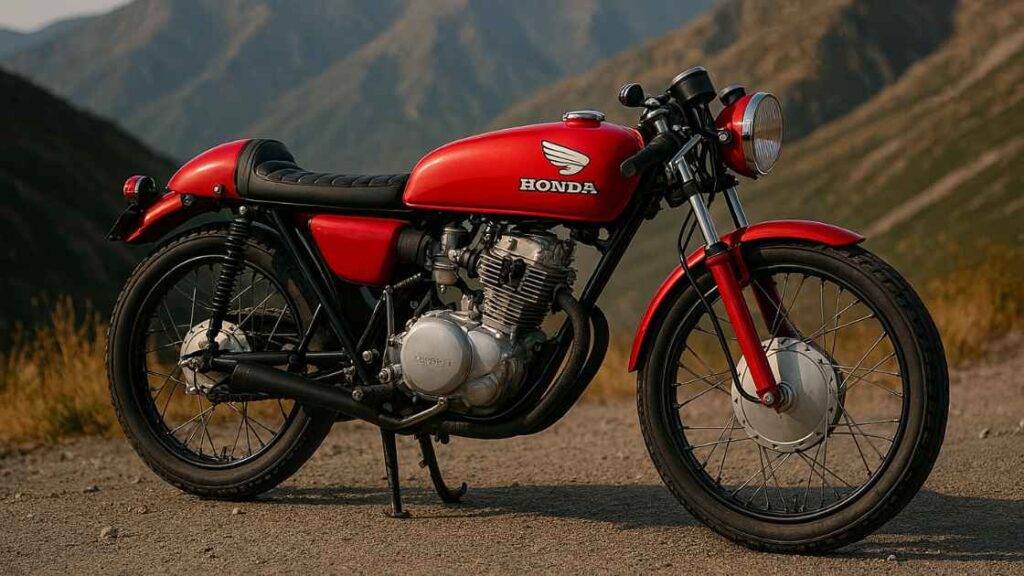
Before you begin building your Honda CB125 café racer, you need a clear plan. A good plan helps avoid mistakes. It also saves time and money. This step decides how your project will look, how much it will cost, and how long it will take.
Choose Your Style
Every café racer has a style. You must decide how your bike will look. Some riders want a vintage look. Others like a modern design with classic lines. You can follow an old-school British café style or create something simple and clean.
Popular style choices include:
- Classic vintage: Round headlight, long seat, metal fenders
- Minimalist: Clean frame, no extra parts, single color
- Neo-retro: Mix of old and new with modern lights and instruments
Look at photos of café racers online. Save the ones you like. This helps you decide what fits your taste and skill.
Set a Budget
Money limits what parts you can buy. Before starting, know how much you want to spend.
Main cost areas:
- Base bike – Already covered in earlier section
- Parts – Seat, tank, tires, lights, exhaust
- Tools – Wrenches, stands, power tools
- Paint – Frame and body finishing
- Legal fees – Registration, inspection, insurance
You can start small and upgrade later. A basic build can cost $1,000–$2,000 total. A high-end custom may reach $3,000 or more. Plan for surprise costs.
Create a Timeline
Projects take time. Set a goal for when you want the bike to be finished. Break it into small tasks.
Example timeline:
- Week 1–2: Buy and inspect the bike
- Week 3–5: Disassemble and clean
- Week 6–10: Modify and test parts
- Week 11–13: Paint and finish
- Week 14–15: Rebuild and tune
- Week 16: Final test and legal check
Work at your own speed. Some people finish in one month. Others take a full year. What matters is doing it right.
Planning makes everything easier. You see what to do, when to do it, and how much it will cost. Without a plan, mistakes are more likely.
Disassembly and Preparation
Before you can build your café racer, you must take the bike apart. This step is called disassembly. It helps you understand the parts and check for damage. It also prepares the motorcycle for changes. Work slowly. Keep things organized.
Tools You Will Need
You do not need expensive tools. But the right tools make the job easier and safer.
Basic tools:
- Socket wrench set
- Screwdrivers (flat and cross)
- Allen keys
- Pliers and wire cutters
- Rubber mallet
- Penetrating oil (for stuck bolts)
- Zip bags and labels (for sorting bolts)
- Camera or phone (to take photos during steps)
Optional but helpful tools:
- Torque wrench
- Motorcycle stand
- Chain breaker tool
- Magnetic tray for small parts
Safety and Workspace
Disassembly should happen in a safe, clean area. You need enough space to walk around the bike. A garage is best, but any flat area can work.
Tips for your workspace:
- Keep the floor dry and clean
- Use strong lights
- Wear gloves and eye protection
- Use a container for used oil and fuel
- Open windows or use a fan for fresh air
Never rush this step. A clean, safe area helps you work better and reduces mistakes.
Step-by-Step Disassembly
Start by removing easy parts first. Then move to the heavier ones. Follow this order:
- Seat and side covers – Most are held with bolts or clips
- Fuel tank – Turn off fuel, disconnect hose, then lift
- Battery and wiring – Take photos of wire layout, remove battery
- Lights and indicators – Remove headlight, tail light, and turn signals
- Exhaust system – Unbolt from the engine and rear frame
- Wheels – Use a stand and remove one wheel at a time
- Fenders and brackets – Remove both front and rear
- Controls and handlebars – Disconnect cables and wires first
- Engine (if needed) – Support with a jack and carefully unbolt
- Frame inspection – Clean and check for cracks, rust, or damage
Cleaning and Rust Removal
Before rebuilding, clean all parts. Remove dirt, grease, and rust. Use a brush and cleaning spray.
Cleaning tips:
- Use a wire brush for metal
- Degreaser for oily parts
- Sandpaper or rust remover for surface rust
- Dry parts fully before storing
Do not paint or modify anything before cleaning. This helps parts last longer and fit better during rebuild.
This step prepares your CB125 for the real work ahead. A well-prepared bike is easier to rebuild, safer to ride, and better looking when finished.
Customizing and Modifying the Honda CB125 for a Café Racer Build
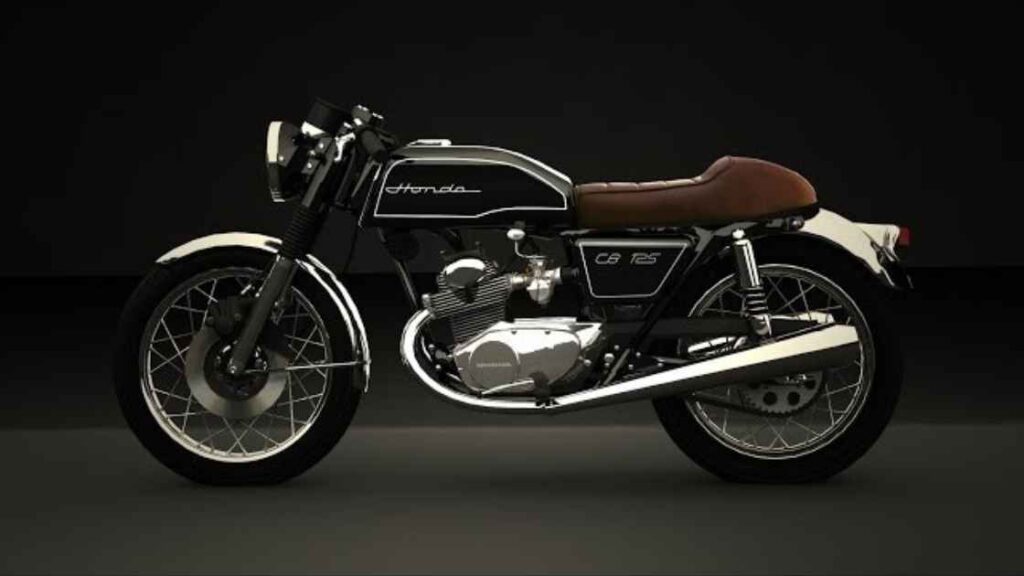
This is the main part of the café racer build. In this step, you change the look and feel of the Honda CB125. You decide how the bike looks, how it rides, and how it fits your style. Each section below covers a different area of the bike. Modify one part at a time. Keep changes simple and clear.
Frame and Bodywork
The frame is the base of the motorcycle. It holds all parts together. Many builders cut or adjust the rear part of the frame. This gives a cleaner and shorter look.
Things to do:
- Cut and loop the rear frame (if needed for seat fit)
- Weld support bars if structure becomes weak
- Install a café racer seat (flat or hump-style)
- Fit a fuel tank that matches the seat and frame
- Remove unwanted brackets and mounts for a clean frame
Keep the seat and tank level. This gives the true café racer shape.
Suspension and Wheels
The ride quality depends on suspension. Old shocks can feel soft. You can replace them with stronger parts.
Steps to consider:
- Change front forks if they are worn or soft
- Replace rear shocks with stronger or adjustable units
- Check the swingarm for movement or damage
- Fit tires with correct size for road grip and café racer look
- Clean or paint wheels for a finished appearance
Balanced suspension helps the bike stay stable during turns and stops.
Engine and Performance Mods
The Honda CB125 engine is small but reliable. You can keep it stock or make light upgrades. Avoid deep engine changes unless you have the skill.
Simple upgrades:
- Clean or rebuild the carburetor (older models)
- Use a better air filter for smoother airflow
- Install a free-flow exhaust for better sound and low weight
- Tune the fuel system for better response
- Replace spark plug and check timing
Do not expect high speed. The goal is smooth performance and strong sound.
Electrical and Lighting
Old bikes often have weak or damaged wiring. A clean electrical setup is safer and looks better.
Important tasks:
- Replace or reduce the wire harness
- Install a smaller headlight and tail light
- Use LED indicators for better visibility
- Add a small battery or capacitor system (for minimal setup)
- Install a basic speedometer or digital display
Label all wires. Make clean and tight connections.
Controls and Ergonomics
How the bike feels depends on its controls. Café racers have a lower, more forward riding position.
Things to install:
- Clip-on handlebars for a low and sporty feel
- Rear-set foot pegs for a tighter riding posture
- Slim grips and small mirrors
- Basic switches for lights and start
- New clutch and brake levers if worn
Every part should be easy to reach and comfortable to use.
This stage defines how your CB125 café racer looks and rides. Work with care. Check each change before moving on to the next.
How to Paint and Finish Your Honda CB125 Café Racer the Right Way?
Once the main parts are fitted, it is time to improve the appearance. Paint and finishing make the motorcycle look clean and complete. This step gives your café racer its final look. It also protects metal parts from rust and damage.
Frame Coating
The frame is often the largest metal part. It needs a strong and smooth finish.
Steps to follow:
- Remove rust using sandpaper or a wire brush
- Clean the surface with degreaser
- Apply primer to help paint stick
- Choose paint or powder coat based on your budget
- Let it dry fully before touching or reassembling
Powder coating is more durable but needs special tools. Spray paint is easier for home use.
Fuel Tank and Body Panels
The fuel tank is the most visible part of the bike. Choose a paint color that matches your style.
What to do:
- Sand the tank to remove old paint
- Fill dents with metal filler, if needed
- Use primer before applying base color
- Apply two to three coats of paint for solid color
- Add clear coat to protect the paint
Let each layer dry before adding the next. Use thin, even layers for best results.
Other Parts and Details
Small parts also need care. These parts may include the swingarm, forks, brackets, and side covers.
Steps to finish these:
- Clean each part well
- Remove rust or dirt
- Paint black or match the frame
- Use matte or gloss finish based on design
A good finish on small parts makes the whole bike look better.
Badges and Decals
Badges and decals add identity to your bike. You can use the original Honda logos or design your own.
Options include:
- Tank logos
- Side panel decals
- Frame stickers
- Small text or numbers for personal touch
Apply them only after the paint is fully dry. Use a ruler for correct placement.
Final Reassembly and Setup of Your Honda CB125 Café Racer
After painting and preparing all parts, it is time to rebuild the motorcycle. This stage must be slow and careful. It connects everything back into one working machine. Check each part during assembly. Make sure every bolt and wire is correct.
Step-by-Step Reassembly
Start with the main structure. Then move to smaller parts.
Follow this order:
- Install the front forks and rear suspension
- Fit the wheels and brakes
- Place the engine back into the frame
- Connect the chain and rear wheel
- Attach the fuel tank and seat
- Install the handlebars, controls, and switches
- Mount the headlight, indicators, and tail light
- Connect the battery and wiring harness
Use photos you took during disassembly to guide this step.
Torque and Tightening
Each bolt must be tight but not over-tight. Use a torque wrench where possible. This keeps parts from loosening or breaking.
Focus on:
- Engine mount bolts
- Axle bolts
- Handlebar clamps
- Brake and suspension fittings
Loose bolts can cause danger. Double-check each area before riding.
Fluid Checks
Add fresh fluids. Old oil and brake fluid can damage the bike.
What to fill:
- Engine oil (check the right amount and grade)
- Brake fluid (use only correct type)
- Fuel (use clean fuel only after full assembly)
Check for leaks before starting the engine.
Electrical Test
Turn on the key and test each electrical function.
Check that:
- Headlight, tail light, and indicators work
- Brake light works with both brakes
- Horn, switches, and starter (if present) are working
- Battery holds a charge
Fix any issues now. Do not ride if electrical parts fail.
First Start Checklist
Before starting the engine, review all steps.
Make sure:
- All parts are fitted and tight
- Chain is aligned and adjusted
- Oil and fuel levels are correct
- No tools are left on the bike
- No wires are loose or touching hot parts
Start the engine. Let it warm up. Listen for strange sounds. If anything feels wrong, turn it off and check again.
Reassembly brings the whole build to life. This step requires patience, care, and attention. It is the final step before your café racer is ready to ride.
Is Your Honda CB125 Café Racer Legal and Insurable for the Road?
Before you ride your custom Honda CB125 café racer on public roads, you must make sure it meets legal rules. These rules protect both you and others. They also help avoid fines or problems with the law. Each country or state has different requirements. You should always check local laws before finishing your build.
One of the most important things is registration. After major changes, some places may ask you to re-register the motorcycle. This means checking the frame number, engine number, and new parts. If your country has yearly safety tests, your bike must pass them. These tests usually look at lights, brakes, exhaust noise, tires, mirrors, and other parts.
The exhaust system is one area that often causes problems. Many café racers use custom pipes. These may not meet local noise or emission rules. You must check if your exhaust is legal for road use. In some areas, loud or modified exhausts are not allowed.
Insurance is also important. Some insurance companies do not cover custom motorcycles. Others charge more if the bike has many changes. You will need to explain every change you made. This may include the seat, handlebars, exhaust, and lights. Some insurers ask for photos or a list of parts. It is better to check this before you begin the build.
If you bought a used CB125 with no documents, you must be extra careful. In many places, you cannot register a motorcycle without a proper title or logbook. Make sure you get the right papers when buying the bike. This avoids legal trouble later.
Riding a custom café racer on the road can be legal and safe. But only if you follow the rules. Always plan ahead. Check what is allowed in your area. Follow the steps for legal checks, registration, and insurance. A smart builder does not skip these tasks.
Test Ride & Performance Tuning
After your café racer is fully built and legal, it is time for the first test ride. This step helps you find out how the motorcycle performs on the road. It also shows if any part needs more adjustment. The first ride should always be slow and careful. Focus on how the bike feels, sounds, and reacts.
Start the engine and let it warm up fully. Listen for any new sounds from the engine or exhaust. Check the idle speed and throttle response. If the engine runs too fast or too slow, the carburetor or fuel system may need tuning. Make sure the clutch works smoothly and the gears shift easily.
As you begin riding, test the brakes gently. Check if the front and rear brakes stop the bike quickly and evenly. If the brake lever or pedal feels too soft or hard, adjust the pressure or check the fluid. Watch the suspension as you ride over bumps. The front and rear shocks should move smoothly and return without noise or delay.
During the ride, observe how the bike handles corners. If the steering feels heavy or unstable, check the tire pressure and alignment. If the seat or handlebars feel uncomfortable, you may need to change the position or height. After a short ride, stop the bike and inspect everything again. Look for loose bolts, oil leaks, or electrical faults.
Tuning the motorcycle after riding is normal. This includes adjusting the carburetor, brakes, chain tension, or lights. You may also need to improve comfort or balance. Small changes can improve performance and safety. Make only one change at a time, then test again.
Performance tuning is not only for speed. It also makes the bike safer and easier to control. A well-tuned café racer runs smoothly, responds quickly, and feels balanced. This step turns your custom build into a rideable and enjoyable motorcycle.
Best Places to Find Parts and Resources for Your Honda CB125 Café Racer
Finding the right parts and guides is important when building a café racer. Not all parts fit every model. Not all websites give clear or honest advice. To build your Honda CB125 café racer the right way, you need reliable sources for parts, tools, and learning.
Start by searching for trusted online stores. Many websites offer café racer parts made for small bikes like the CB125. Choose sellers that list full product details, clear photos, and shipping options. Always check the model and year compatibility before buying. Some parts may only fit older versions or specific frames.
Useful places to buy parts:
- Motorcycle parts websites that sell universal and Honda-specific parts
- Online shops that focus only on café racer or custom builds
- Big platforms like eBay or Amazon, where you can compare prices and reviews
- Local bike shops or salvage yards that offer used or rare parts
Look for these parts:
- Seat unit made for small frames
- Clip-on handlebars and rearsets
- Exhaust pipes with correct size and angle
- Lighting kits with low power use
- Wiring kits for clean and simple electrical work
- Speedometers, mirrors, switches, and grips
Besides parts, you also need learning tools. These help you work safely and correctly. Some websites share full build guides. Some give wiring diagrams, torque specs, or safety checks. Use them to plan each step of your project.
Good sources for help and advice:
- YouTube channels that show full builds or part installations
- Motorcycle forums where people share their CB125 builds
- Facebook groups focused on café racers and small bike customs
- Websites with blog posts and downloadable manuals
Join online communities. Ask questions. Share progress. Many builders help each other. They share advice, photos, and tools. This saves time and avoids mistakes.
The more you learn before buying, the better your results. A well-chosen part fits better, lasts longer, and works safely. Trusted resources make your café racer journey smoother and more enjoyable.
Maintenance Tips for Your Custom CB125
After building your Honda CB125 café racer, regular care is important. Custom motorcycles need more attention than stock bikes. Some parts wear faster. Others need checking often. Good maintenance keeps your bike safe, clean, and ready to ride.
Start with simple daily checks before each ride. Make sure the tires have the correct pressure. Test the front and rear brakes. Check that the lights and signals work. Look at the chain to see if it is tight and clean. A quick look at these parts helps prevent bigger problems later.
Plan a basic check every few weeks. Use this time to clean the motorcycle. Check for leaks, loose bolts, or worn cables. Wipe down the frame and engine. Look for signs of rust. Clean the exhaust with a soft cloth to keep it from losing color or finish. If your bike has many exposed wires or custom electrical parts, inspect them one by one.
At least once every few months, do deeper maintenance. This includes:
- Changing the engine oil and cleaning the filter
- Checking and adjusting the chain tension
- Tightening all bolts, nuts, and screws
- Cleaning the carburetor or checking fuel injection system
- Inspecting tires for cuts, cracks, or low tread
- Cleaning or replacing the air filter
- Checking battery condition and charging level
If your bike sits for long periods, use a fuel stabilizer. This keeps the fuel fresh and avoids engine problems. Store the bike in a dry place. Use a cover to keep dust and water away. Lift the bike off the ground if possible, to protect the tires.
After each ride, cool the engine before cleaning. Do not wash with high water pressure. Water can damage electrical parts and remove grease from moving parts. Use soft brushes and gentle soap.
Conclusion
Building a Honda CB125 café racer is not only a creative project. It is also a way to learn, improve skills, and create a bike that reflects your own style. The CB125 is light, simple, and easy to work with. It is a good choice for new builders and riders.
Each step in the process—from planning and disassembly to final tuning—teaches something useful. With the right tools, guidance, and care, your finished café racer can be safe, legal, and enjoyable.
This guide gives you the full process. Now you can start your project with confidence. Take your time. Make careful choices. Build a café racer that is clean, functional, and ready for the road.
FAQs
Is the Honda CB125 a good base for a café racer project?
Yes, the CB125 is lightweight, reliable, and easy to modify. Its simple frame and engine make it a strong choice for first-time builders and budget café racer projects.
How much does it cost to build a Honda CB125 café racer?
A basic build can cost between $1,000 and $2,000, depending on the condition of the base bike and the parts used. Premium builds may cost more if you use high-end components.
Do I need special tools to build a café racer from a CB125?
No special tools are required, but having basic mechanical tools, a torque wrench, and a clean workspace will make the job much easier and safer.
Can I ride a customized Honda CB125 café racer legally on the road?
Yes, but it must meet your local road safety and emissions regulations. Check requirements for lights, mirrors, exhaust noise, registration, and insurance.
What are the best parts to upgrade on a Honda CB125 for a café racer build?
Popular upgrades include the seat, handlebars (clip-ons), rearsets, exhaust, lighting, and tires. Many builders also refresh the suspension and brakes.
Can I build a Honda CB125 café racer without welding or frame cutting?
Yes. You can use bolt-on seat kits and universal parts. However, for a cleaner look, mild frame modifications are common. Welding adds more design freedom but is not required.
How fast is a Honda CB125 café racer after modifications?
Top speeds range from 55 to 65 mph (90–105 km/h). Modifications can improve acceleration and responsiveness but won’t dramatically increase top speed due to engine size.
Are there beginner-friendly guides or videos for building a CB125 café racer?
Yes. Several YouTube channels and forums offer step-by-step videos and advice tailored for beginners. Search for “CB125 café racer build series” for visual tutorials.
How can I make my Honda CB125 café racer stand out?
Focus on unique paint, custom tank shape, seat design, and subtle details like badges, hand-made parts, or minimal wiring. Small changes create big impact.
What legal documents do I need when buying a CB125 for a café racer project?
Always check for the title, VIN, registration papers, and service history. In some countries, missing paperwork can prevent registration or resale.

